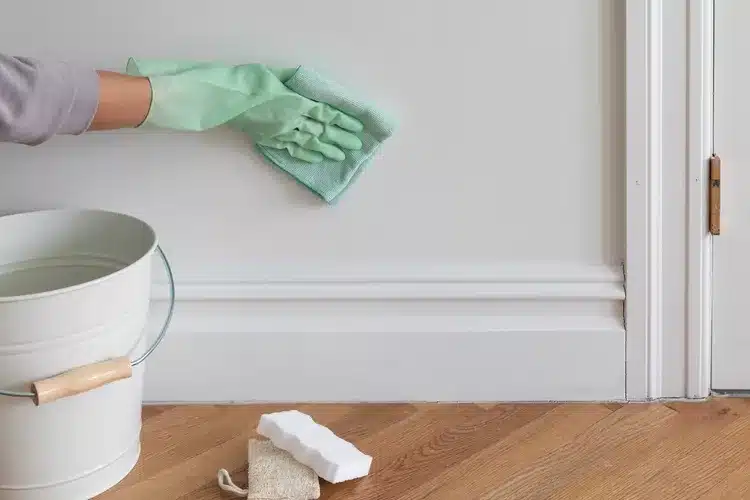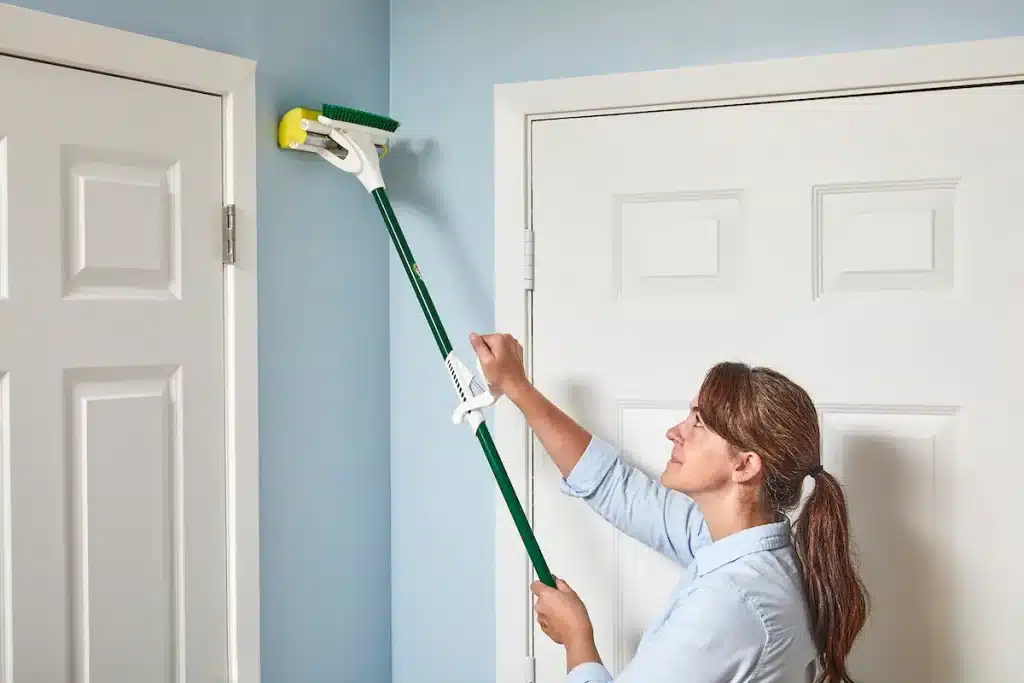When it comes to keeping your home clean, floors usually get all the attention. Mopping, vacuuming, and scrubbing the tiles become part of the regular routine. But here’s the dirty little secret: your walls are often much dirtier than your floors, and they usually go unnoticed. Cleaning dirty walls might sound like a hassle, especially if you’re picturing a ladder and a bucket, but it doesn’t have to be that way. With a few clever tricks, you can keep your walls looking fresh without needing to leave the ground. Let’s uncover why walls get so grimy—and how to clean them with ease.
Why Walls Get Dirtier Than Floors
We naturally expect dirt on our floors—they’re underfoot all day long. But walls? Surprisingly, they can be just as bad, if not worse. Here’s why:
- Dust travels upward: Air circulation, ceiling fans, and heating systems can push dust and debris up, where it clings to vertical surfaces.
- Grease loves walls: In the kitchen, airborne cooking grease finds its way onto nearby walls, especially behind stoves and next to counters.
- Touch zones: Light switches, door frames, and hallway corners are often touched without us realizing. Skin oils, food smudges, and fingerprints build up fast.
- Neglect: Floors are cleaned weekly, but when was the last time you gave your walls a wipe-down?
Over time, all of this adds up—leaving walls looking dull, stained, and far from fresh.
The Hidden Impact of Dirty Walls
Beyond just looking bad, dirty walls can affect your home more than you think. Dust, allergens, and pollutants stick to wall surfaces and can affect air quality. In humid areas, this grime can lead to mold or mildew. For people with allergies or asthma, this hidden dirt can be a sneaky trigger.
Plus, if you ever want to repaint, sell your home, or just freshen things up, starting with clean walls makes a huge difference. Regularly cleaning dirty walls doesn’t just make your space look better—it helps it feel healthier too.

Do You Need a Ladder?
Nope! One of the biggest myths about cleaning walls is that you need to climb and stretch to get the job done. The truth is: you can absolutely do it from the ground. With the right tools, even high corners and ceiling lines are within reach. That means less hassle, less risk of injury, and a faster routine.
Tools You’ll Need to Clean Walls Without a Ladder
Here’s what to gather before you start:
- A flat microfiber mop with an extendable handle
- A bucket
- Warm water
- A small amount of dish soap
- White vinegar (optional for grease)
- A few soft microfiber cloths or old T-shirts
- A vacuum with a brush attachment
- Drop cloths or old towels to protect your floors
Everything on this list is probably already in your home or can be bought for just a few euros or dollars. Cleaning dirty walls doesn’t require anything fancy—just a smart approach.
Prep Your Space
Start by moving furniture away from the walls. You don’t need to empty the whole room, just make enough space so you can move freely. Place towels or cloths along the baseboards to catch drips. If your walls are especially dusty, vacuum them first using a brush attachment. This keeps your mop from turning into a muddy mess later.
Make a Gentle Cleaning Mix
In a bucket, mix:
- 1 liter of warm water
- A few drops of mild dish soap
- (Optional) 1 tablespoon of white vinegar
This solution is gentle on most paints and wallpaper but still cuts through grime. If you’re worried about a specific paint finish, test a small area first.
Start Cleaning – From the Ground Up (Well, Top Down)
Even though you’re working from the ground, always clean from the top of the wall down. This prevents dirty water from dripping onto clean sections.
- Dip the mop into your solution, wring it out well
- Use gentle up-and-down strokes
- Work in small sections
- Don’t oversaturate—less is more
- Rinse and wring the mop regularly
Cleaning dirty walls this way is faster than it sounds. One wall can take just 10 minutes, especially if done regularly.

What About Corners and Edges?What About Corners and Edges?
Corners can collect spiderwebs and dust. For these areas:
- Use a dry microfiber cloth around your mop head
- Or attach an old sock over a broom handle
For baseboards and low edges, kneel with a cloth and give them a quick swipe. You’ll be surprised how much better your room looks once these edges are clean. It’s one of the easiest parts of cleaning dirty walls and makes a big visual difference. Don’t forget to check behind doors—grime often hides there too. When cleaning dirty walls, details matter just as much as large surface areas. Add it to your monthly routine for an instantly fresher feel.
Stubborn Spots? No Problem
Some stains don’t go away easily. For these, try:
- Baking soda paste: Mix a small amount of baking soda with water. Rub gently with a cloth on greasy or stained spots.
- Magic erasers: Good for crayon, pencil, or mystery smudges. Use lightly to avoid removing paint.
- White vinegar spray: For walls near the kitchen or bathroom, spray vinegar, wait 5 minutes, and wipe clean.
Always test in a hidden spot first to be safe. These techniques are essential for cleaning dirty walls thoroughly, especially in homes with kids or lots of kitchen activity.
What Paint Type Do You Have?
Knowing your wall’s paint type helps:
- Gloss and semi-gloss: Easier to clean and more water-resistant
- Satin and eggshell: More delicate—be gentle
- Matte and flat paint: Very sensitive to scrubbing, so use minimal pressure
If you’re not sure, clean a small hidden patch first and wait for it to dry. Any changes in color or texture will be noticeable there before you tackle the whole wall. When cleaning dirty walls, this simple step can save you from damaging your paint job.
Cleaning Dirty Walls in Every Room
Each room has different wall-cleaning needs:
- Kitchen: Wipe walls every 2–3 weeks near cooking areas. Grease builds up quickly.
- Bathroom: Watch for moisture, especially near the shower or behind the toilet.
- Living room: Focus on areas around TVs, light switches, and behind furniture.
- Bedrooms: Especially children’s rooms—think fingerprints, food stains, or crayon art.
- Hallways and staircases: High-traffic zones deserve attention monthly.
Keep a simple routine. You don’t need to clean every wall every week. Prioritize based on the room’s use, and you’ll find that cleaning dirty walls becomes more manageable over time.
Your walls may be quietly collecting more grime than you realize. From cooking grease to fingerprints and dust, they take on more than their fair share—often without a second glance. But cleaning dirty walls doesn’t need to be complicated or require a step stool. With just a mop, a bucket, and a bit of your time, you can refresh every room in your home. Stick to a gentle routine, pay attention to high-use areas, and enjoy the difference clean walls make. Because sometimes, looking up is the best way to keep your home looking its best.
Do you want to learn more tips & tricks on all things cleaning? Just visit our Cleaning category and read on!











